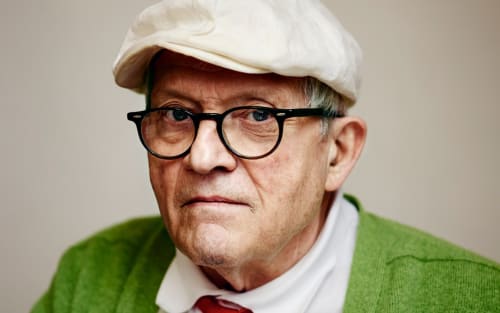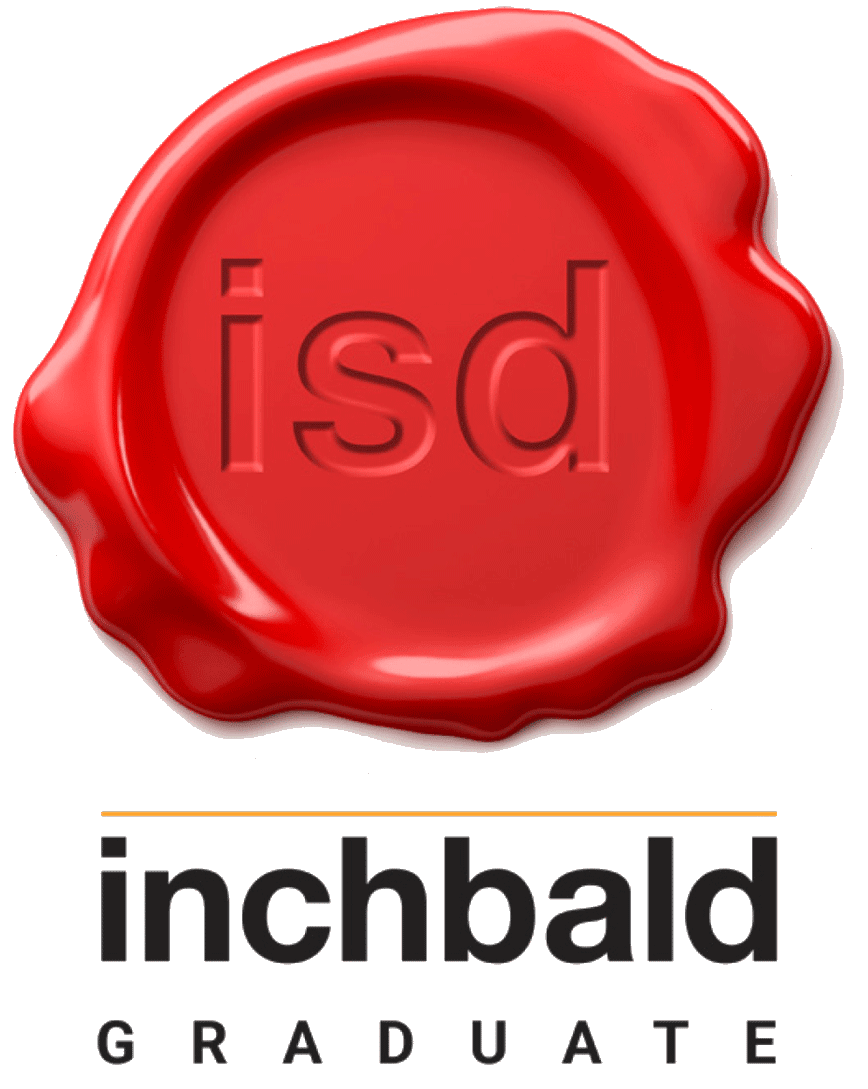One of the most influential living British artists
Born in Bradford, England to Laura and Kenneth Hockney, David Hockney was the fourth of five children. His father Kenneth Hockney had been a conscientious objector during the Second World War. He came from a strictly Methodist Christian family, his parents were strictly against smoking, something he would later be very much in favour of.
During his time at grammar school, Hockney developed a penchant for art, enjoying his art classes more than other lessons and drawing for the school newspaper. After his request for a transfer to Bradford Arts College was turned down he finished his studies and finally enrolled at the art college in 1953. Like his father, as conscientious objector to military service, he spent two years working in hospitals to fulfil his national service requirement. In 1959, he entered graduate school at the Royal College of Art in London alongside other young artists such as Peter Blake and Allen Jones, and experimented with different forms, including abstract expressionism. He did well as a student, and his paintings won prizes and were purchased for private collections.
Hockney's characteristic style of oil painting was learned and honed during his time at the Bradford Arts College. Oil painting would become his main method of choice for much of his life. He achieved a National Diploma in Design Examination and graduated from the art college in 1958. The following year Hockney enrolled at the Royal College of Art in London. He had already been to see art exhibits in London several times as a student at the Bradford Arts College.
At the RCA Hockney became friends with Peter Blake, the artist who later went on to design the iconic Beatles' album sleeve for "Sgt. Pepper’s Lonely Hearts Club Band". Together they featured in an annual exhibition called "Young Contemporaries" supported by British Society of Artists Galleries in 1960. The exhibition was the beginning of Hockney's recognition in the art world.
His first visit to the USA came in 1961 while he was still studying at the RCA. He paid for the trip by selling his paintings. In New York he met other artists, most notably Andy Warhol. Returning to Britain, Hockney finished his studies at the RCA in 1962. There he caused a stir by refusing to take his final written exam, insisting that he should be judged on his artwork alone. The RCA recognised his talent and Hockney was awarded his diploma.
Because he frequently went to the movies with his father as a child, Hockney once quipped that he was raised in both Bradford and Hollywood. He was drawn to the light and the heat of California, and first visited Los Angeles in 1963. The swimming pools of L.A. were one of his favourite subjects, and he became known for large, iconic works such as A Bigger Splash, which began to define his artwork inspired by California. Throughout the late 1960s, Hockney frequently created portrait paintings of relatives, friends, and lovers. He would return to these subjects repeatedly over the years.
Hockney entered into a romance with a young man named Peter Schlesinger in 1967. The two were happy for a time and lived together in Los Angeles. They also toured Europe together. Schlesinger was the subject of various paintings and photographs by Hockney. After several years the two experienced difficulties in their relationship and split up in 1971. In the same year after extensive work, continuing with his portrait themes Hockney finished his painting "Mr and Mrs Clark and Percy". It was displayed at National Portrait Gallery in London. His expressionistic style evolved, and by the 1970s, he was considered more of a realist.
David Hockney greatly expanded his experimental work in the 1980s. He began to create photo collages that he called "Joiners". Utilizing a Polaroid camera, and later 35mm commercial colour prints, Hockney took thousands of photographs in his travels and used them to create photo collages and montages. He viewed this method of art as a way of setting a narrative that paintings couldn't. Joiners came into being by accident when Hockney tried gluing together Polaroid photos of his living room in Los Angeles. He created Joiners of both portraits and landscapes but eventually decided to return to painting, describing photography as a "one-eyed" approach to art.
Set design had been an interest of Hockney since the mid-1970s but he began to dedicate more of his time to it in the early 1990s. He worked on sets for Chicago Lyric Opera and the London Royal Opera House, then in 1994 sets for the televised Plácido Domingo's Operalia in Mexico.
In 1995 came a touring exhibition of Hockney’s work, it traveled from Hamburg, Germany to London, Britain and finally to Los Angeles, California. Exhibitions and tours around various parts of the world made up a large part of his illustrious career. By this time he was alternating between living in California and England. In England, he finished countryside landscapes like "North Yorkshire" and "Garrowby Hill". While in Los Angeles he created "A Bigger Grand Canyon" a set of 60 smaller paintings depicting the Grand Canyon. The whole set was on display at the National Museum of American Art in Washington D.C until it was bought by the National Gallery of Australia where the work now resides.
Hockney kept traveling during the early 2000s. In 2001 he visited Belgium, England, Germany, and Italy. He worked with the BBC on a documentary titled "David Hockney’s Secret Knowledge" and held exhibitions in the USA and Germany. More time was dedicated to his writing as well. The author of several books about art and his other areas of interest, in 2001 "Secret Knowledge: Rediscovering the lost techniques of the Old Masters" was published.
Between 2003-2004 Hockney studied watercolour painting extensively in several countries. He used this to create watercolour landscapes of the Yorkshire countryside. His studying of watercolour art influenced his later oil paintings.
The largest piece of art painted by Hockney is "Bigger Trees Near Warter", a landscape painted on 50 canvasses over five weeks. After first being hung in the Royal Academy of Arts, Hockney donated "Bigger Trees Near Warter" to the Tate Gallery in London, saying "I thought if I'm going to give something to the Tate I want to give them something really good. It's going to be here for a while. I don't want to give things I'm not too proud of."
Experimenting further with art and technology, Hockney has drawn extensively with iPad's. The 2011 Fresh-Flowers exhibit at the Royal Ontario Museum in Canada displayed many of his iPad drawings. Many of his later works have been landscapes and in keeping with this and his use of technology, he sketched Yosemite National Park, California, with an iPad in late 2011.
On 15 November 2018, Hockney's 1972 work Portrait of an Artist (Pool with Two Figures) sold at Christie's auction house in New York City for $90 million (£70 million), becoming the most expensive work by a living artist sold at auction. This broke the previous record, set by the 2013 sale of Jeff Koons' Balloon Dog (Orange) for $58.4 million. Hockney held this record until 15 May 2019, Jeff Koons reclaimed the honour when his Rabbit sold for more than $91 million at Christie's in New York.
Today David Hockney continues to split his time living in both California and London having sold his Bridlington house in 2015. He still paints, writes, tours, and holds exhibitions around the world. A poll by The Other Art Fair in which 1000 British painters participated named him the most influential British artist of all time. He set up the David Hockney Foundation in 2012 to help preserve his artwork and ensure it goes to public galleries rather than private collectors. He funds and donates paintings to the foundation to this day.



